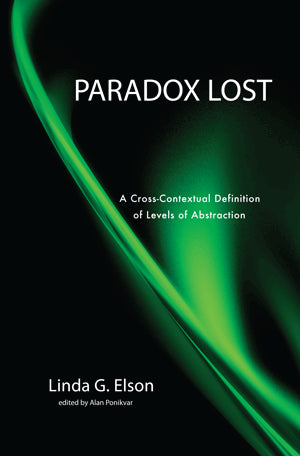1
/
of
1
generalsemanticsstore
Paradox Lost: A Cross-Contextual Definition of Levels of Abstraction
Paradox Lost: A Cross-Contextual Definition of Levels of Abstraction
Regular price
$26.50
Regular price
Sale price
$26.50
Unit price
/
per
Couldn't load pickup availability
Paradox Lost: A Cross-Contextual Definition of Levels of Abstraction
by Linda G. Elson
Edited by Alan Ponikvar
With a remembrance by Thom Gencarelli, an Introduction by Lance Strate, and an Afterwards by Corey Anton
In this work Linda Elson is guided by an interest in bringing clarity by way of a definition to a central theme of communication theory -- levels of abstraction. She notes that a "levels-perspective" has been often employed in various fields of study but has not itself been a topic of investigation. By rectifying this problem, Elson hopes that there will be an appreciation of the explanatory scope of such a perspective. To this end, this work's concluding chapter surveys and offers creative applications and suggestive implications of a levels approach to a wide variety of fields. Elson's work is grounded in Alfred Korzybski's program of "consciousness of abstracting" as well as Gregory Bateson's appropriations of Bertrand Russell's theory of logical types. But she argues that Korzybski and Bateson, for all they have done in turning attention to processes of abstraction and levels of logical typing, have nevertheless failed to provide a coherent definition of levels phenomena. Her definition emerges as she explores levels phenomena that arise in logical paradoxes, considering in turn the liar's paradox, the prediction paradox, and the prisoner's dilemma. She then explores double binds that arise from paradoxical injunctions, and concludes her study with a delightful survey of jokes and a clever analysis of humor in light of the work of Henre Bergson. Contents At the Margins, a Remembrance by Thom Gencarelli An Introduction to Paradox Lost by Lance Strate Editor's Notes Introduction The Liar The Prediction Paradox The Prisoner's Dilemma Comparing Lies, Predictions and Dilemmas The Double Bind Humor Toward the Definition Implications and Applications A Levels-Orientation to Abstraction Logical Typing, and Language More Generally by Corey Anton Bibliography Author Index Subject Index Hampton Press, 2010. 217 pg. Soft paperbound, color cover. ISBN 978-1-57273-946-8.
Shipping & Returns
Shipping & Returns
Share


